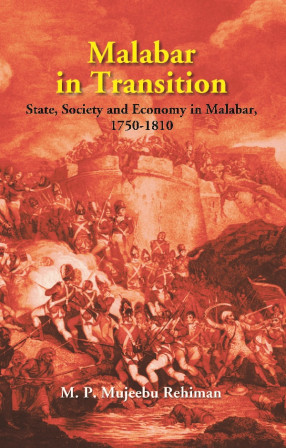Malabar in Transition: State, Society and Economy in Malabar, 1750-1810
Contents: Introduction. 1. Society, Economy and State in Pre-modern Kerala: Some Observations. 2. Battle For ‘Pepper State’: Mysore State’s Interventions and Transformation of Society. 3. The British Power in Malabar: Genesis of Transition to a Colonial Structure. 4. Land Rights and Relations in Malabar: Problematizing British Perceptions. 5. Anti-colonial Resistance and Consolidation of British Power. Conclusion. Glossary. Bibliography .
The book, Malabar in Transition: State, Society and Economy of Malabar, 1750- 1810, focuses mainly on the process of transition of state, economy and society of the period in the region of Malabar, situated in the South western coast of peninsular India. The work actually unravels the process of social and economic change, especially in the ownership right in land in the backdrop of British colonial state in Malabar. It covers a time span of three different phases of process of transition. Accordingly, the first phase, the period between 1750 and 1766 represents the traditional or pre- Mysorean social order in Malabar. In the second phase, that is from 1766, there heralded a new statecraft and socio-economic fabric under the Mysorean rulers Haidar and Tipu Sultan up to 1792, when the British defeated Tipu in third Anglo-Mysore war. The third phase covers a period from 1792 to 1810, which marks the foundation of the colonial supremacy in Malabar. During this time, the British introduced certain colonial policies in order to collect revenue and sustain their rule over the province. Naturally, the period witnessed sporadic anti-British struggles which were snowballed by the indigenous subaltern sections, read Mappilas and tribals, which endured for several years. Though the challenge from Pazhassi Raja and his men including tribals and Mappilas, the local dissident Raja was to come to an end by his death in the year 1805, the Company had to wait quite for a long time (at least up to 1810) to normalize and stabilize its administrative establishment. In such a way, the book offers an interpretive and analytical understanding on the basis archival source materials and reconsideration of the existing theories and arguments.
Get it now and save 10%
BECOME A MEMBER







Bibliographic information